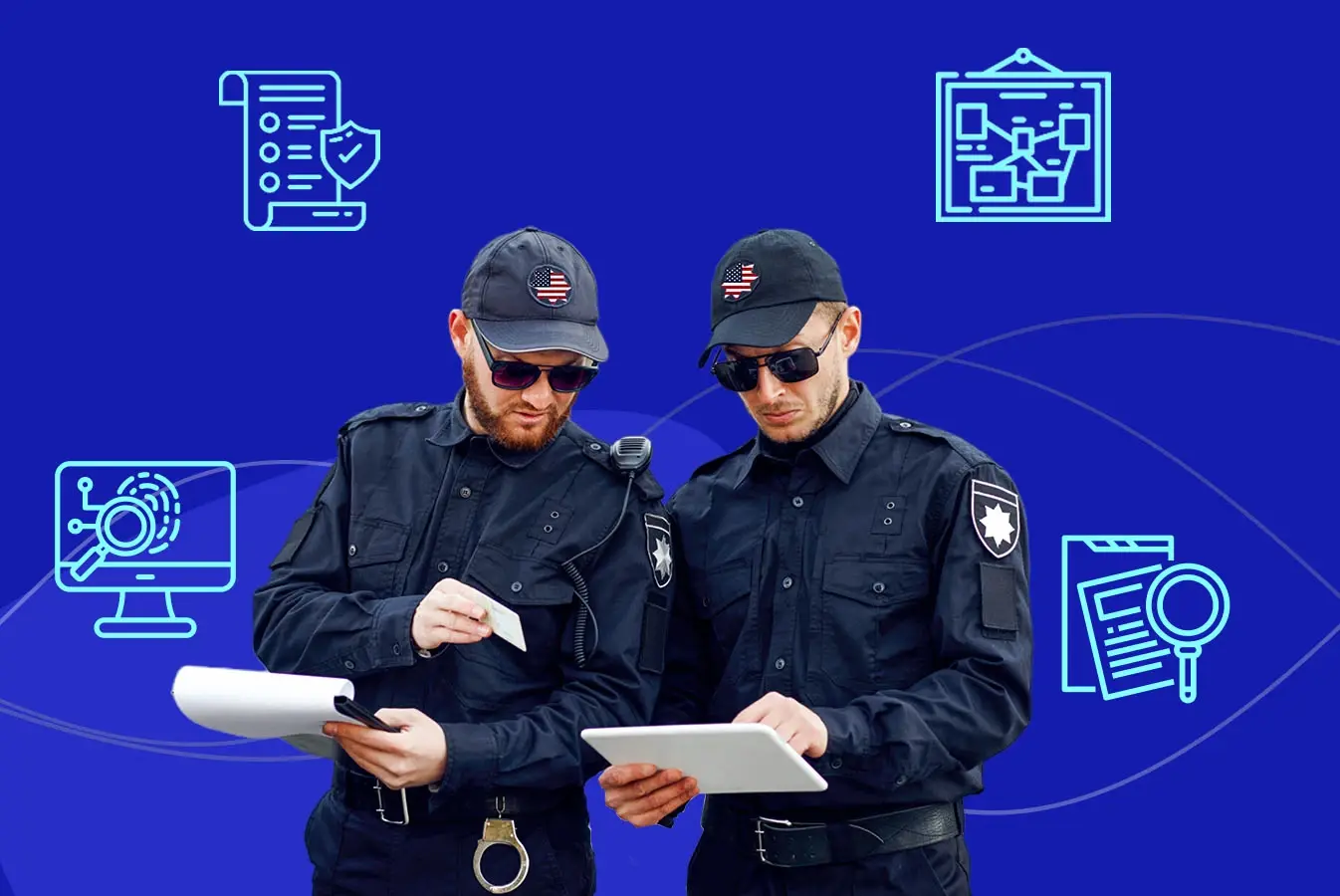Most prosecutors and law enforcers prioritize digital evidence over DNA and physical evidence. However, an all-in-one digital evidence management system is necessary to cater to the ever-growing volume of evidence.
This is because, owing to the growing volume of proof and its sensitive nature, collecting, preserving, and managing digital evidence is quite complex.
Besides that, data collection sources have quadrupled, from chat logs to emails, documents, videos, audio, and much more!
Additionally, over 16 years, data compromises have doubled every 8 years. In 2006, there were 321 data compromises, and by 2022, the number had risen to a staggering 1802, growing at a CAGR of 11%.
Remember, there is no room for error, as the slightest mishaps can make evidence inadmissible.
With that all said, let's dive into the best practices for collecting, preserving, and managing digital evidence.
However, if time is of the essence, jump to our 7-day free trial and see how our system simplifies evidence handling.
Collecting Evidence on Digital Evidence Management Systems
Collecting digital evidence involves gathering data from various sources and then securely storing it. Basically, these are files that are recorded by multiple digital devices.
According to the International Journal of Digital Evidence (IJDE), sources of digital evidence include:
- Equipment such as routers, firewalls, servers, client devices, portable devices, and embedded devices
- Application software, such as accounting packages for evidence of fraud, ERP packages for employee records and activities (e.g., in case of identity theft), system and management files
- Monitoring software such as Intrusion Detection Software, packet sniffers, keyboard loggers, and content checkers.
- General logs, such as access logs, printer logs, web traffic, internal network logs, Internet traffic, database transactions, and commercial transactions
- Other sources, such as CCTV, door access records, phone logs, PABX data, telco records, network records, call center logs or monitored phone calls, and recorded messages
- Back-ups and archives, for example, laptops and desktops.
And thanks to Digital Evidence Management Systems, files sourced from various devices (regardless of type or size) can be ingested in bulk.
This automation reduces the manual effort, allowing people to focus more on analyzing collected data.
Preserving Evidence on Digital Evidence Management Systems
Preserving digital evidence is a meticulous process that demands attention to its time-sensitive nature, the intricacies of digital imaging and hashing, and secure storage mechanisms.
Since evidence is the key to solving all cases, its integrity must be safeguarded so it's admissible in legal proceedings.
Since digital evidence is susceptible, it can be easily modified or tampered with. That's precisely the reason why you need a digital evidence management system.
Tamper detection is the most essential factor in preserving digital evidence. It guarantees evidence originality and ensures that it has not been manhandled.
Each digital evidence file has a unique hash value, which stays the same unless the file has been altered. It's a must-have feature every comprehensive DEMS should include.
Chain of custody reports or audit trails are another vital factor for preserving digital evidence. These documents detail who collected, amended, or shared an evidence file.
Another crucial factor to keep in mind regarding digital evidence preservation is evidence storage. This includes flexible deployment methods that suit your long-term needs and goals. The most common deployment types include on-premise, cloud, hybrid, and software-as-a-service (SaaS).
Want to know what safe evidence preservation feels like? Here's VIDIZMO DEMS 7-day free trial!
Managing Evidence on Digital Evidence Management Systems
Considering evidence's vulnerable properties, it is of the utmost importance to handle it with care because if tampered with or viewed by an unauthorized individual, it may be deemed unfit.
Besides other protocols, a Digital Evidence Management System must be backed by the latest encryption features to ensure that data will remain confidential even if breached.
Also, a robust system should automatically add metadata to different pieces of evidence — it paints a clear picture about when, how, and by whom an entry was made.
Moreover, a good DEMS will feature role-based access controls, which ensure that the file can be viewed, shared, or edited by those authorized to do so.
Other than that, a sound system should be backed by AI-powered search, which allows efficient retrieval of digital evidence,
No matter how dated a piece of evidence might be, thanks to new-age search capabilities, you can quickly find what you are looking for and search within video, images, documents, or audio using specific objects, words, or faces.
VIDIZMO Digital Evidence Management System — A One-Size Fits All Solution!
VIDIZMO Digital Evidence Management System (DEMS) is an all-around solution for legal professionals - be it prosecutors, attorneys, advocates, or any other individuals or companies versed in the law.
Working as a digital evidence repository, all evidence is secured in one dashboard, leading to efficient and effective digital evidence management.
With essential features, such as chain of custody reports, tamper detection, AI-powered search, and redaction, VIDIZMO DEMS is a must-have for collecting, preserving, and managing digital evidence.
For further queries and concerns, and to clear any doubts, please reach out or visit our website for more information.
Also, don't just take our word for it – test it yourself by subscribing to our 7-day free trial (no credit card required).
Frequently Asked Questions (FAQs)
What are the best practices for collecting digital evidence?
Best practices involve meticulous identification, extraction, and adherence to legal standards. Identify sources comprehensively, maintain a transparent chain of custody, use specialized tools for secure extraction, and ensure compliance with legal regulations.
What is the best way to preserve digital evidence?
Swift preservation with tamper detection using unique hash values and detailed chain of custody reports is key. Choose flexible storage methods—on-premise, cloud, or hybrid setups—to maintain evidence integrity long-term.
What is the proper procedure for collecting, preserving, and storing digital evidence?
Collect comprehensively, preserve swiftly with tamper detection, and store securely using on-premise, cloud, or hybrid solutions — ensuring evidence integrity and accessibility.
What is used to preserve evidence?
Preservation includes tamper detection with unique hash values and a detailed chain of custody. Digital evidence is stored on premises, in the cloud, SaaS, or hybrid setups for secure, long-term accessibility.
What is digital evidence management?
Digital evidence management is the systematic handling, collection, preservation, organization, and secure storage of digital evidence pertinent to legal proceedings. It involves employing specialized methodologies, tools, and software to ensure digital information's integrity, authenticity, and admissibility.
Posted by VIDIZMO Team
We at VIDIZMO are experts in secure and compliant video streaming and digital evidence management. Our aim is to help educate such that you can better utilize your video data.





